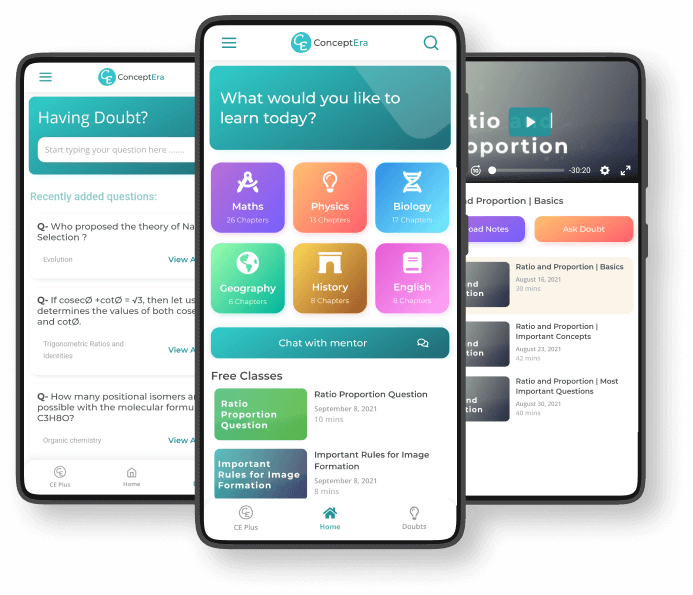Group – A
- Write the correct answer from the given alternatives:
1.1 The process by which natural agent reshape the existing landscape over the earth’s surface is known as –
(a) Exogenetic process
(b) Endogenetic process
(c) Orogenetic process
(d) Epeirogenetic process
1.2 The main erosional process of river over salt dominated rock is –
(a) Abrasion
(b) Attrition
(c) Hydraulic action
(d) Solution
1.3 The uppermost layer of heterosphere is –
(a) Hydrogen layer
(b) Helium layer
(c) Atomic oxygen layer
(d) Molecular nitrogen layer
1.4 The instrument by which humidity of air mass is measured-
(a) Thermometer
(b) Barometer
(c) Hygrometer
(d) Anemometer
1.5 The influence of EL-Nino is observed in –
(a) Atlantic Ocean
(b) Pacific Ocean
(c) Indian ocean
(d) Arctic ocean
1.6 When the distance between earth and moon becomes least, the generating tide is called –
(a) Springtide
(b) Neap tide
(c) Perigean tide
(d) Apogean tide
1.7 The processes of waste management involve –
(a) Reuse of waste
(b) Recycling of waste
(c) Reduction of waste
(d) All of them.
1.8 The youngest state of India is –
(a) Uttarakhand
(b) Telangana
(c) Chhattisgarh
(d) Goa
1.9 Dust storms of North-West India in summer is called –
(a) Kalbaishakhi
(b) Andhi
(c) Western Disturbance
(d) Loo
1.10 A method followed in India to conserve soil is –
(a) Irrigation
(b) Jhum cultivation
(c) Strip cropping
(d) Animal rearing
1.11 The state, which ranks first in jowar production in India is –
(a) Maharashtra
(b) Uttar Pradesh
(c) Bihar
(d) West Bengal
1.12 The “Silicon Valley of India” refers to –
(a) Chennai
(b) Bengaluru
(c) Kolkata
(d) Delhi
1.13 The longest National Highway in India is –
(a) National Highway 1
(b) National Highway 2
(c) National Highway 6
(d) National Highway 7
1.14 The R.F. of a topographical map with 15’x15′ latitudinal and longitudinal extension is
(a) 1: 2,50,000
(b) 1: 1,00,000
(c) 1: 50,000
(d) 1: 25,000
Group – B
2.1 If the statement is true. write “T’ and if false, write ‘F’ against the following (Answer any six statements):
2.1.1 Seif dunes are transformed from Barkhan dunes.
2.1.2 Ozone layer is known as “Natural sunscreen”.
2.1.3 In Mediterranean regions, rainfall generally occurs in summer.
2.1.4 Strait line alignment of the Sun, the Moon, and the Earth is called Syzygy.
2.1.5 Most of the rice in India is cultivated in winter as a Rabi crop.
2.1.6 The most densely populated state of India is West Bengal.
2.1.7 Different symbols are used to show geographical features in satellite images.
2.2 Fill in the blanks with suitable words (Answer any six):
2.2.1 Planation of landmass caused by different exogenic forces is called _______.
2.2.2 Long, narrow, winding, steep-sided, ridges formed by the fluvioglacial deposits of sands and gravels are called _______.
2.2.3 In Rainfall-Temperature graph of any place, if the temperature curve becomes downward during mid of the year then the station lies in ________ hemisphere.
2.2.4 ________ force of the earth causes secondary high tide.
2.2.5 Air conditioners emit ________ gas into the atmosphere.
2.2.6 Bhagirathi and ________ river meet at Devprayag to form the river Ganga.
2.2.7 ________ city is called as the “Manchester of South India”.
2.3 Answer in one or two words (any six):
2.3.1 Name the high land which separates two rives systems.
2.3.2 What is the relative humidity of saturated air?
2.3.3 What type of current originates in the tropical ocean?
2.3.4 What type of waste material is plastic?
2.3.5 Name the highest mountain pass in India.
2.3.6 Where is the largest mangrove forest in the world located?
2.3.7 Which soil of India is ideal for cotton cultivation?
2.3.8 Which roadway has connected Delhi. Mumbai, Chennai, and Kolkata?
2.4 Match the left column with the right column:
| Left Column | Right Column |
|---|---|
| 2.4.1 ISRO | 1. Kerala |
| 2.4.2 Vembanad | 2. Tax-free port of India |
| 2.4.3 Andhi | 3. Indian Space Research Organization |
| 2.4.4 Kandla | 4. Rajasthan |
- Answer the following questions in brief (Alternatives should be noted)
3.1 How are the bird’s foot deltas formed?
OR
What is Bergschrund?
3.2 Mention two characteristic features of Jet Streams.
OR
What is a tidal bore?
3.3 What do you mean by landfills in waste management?
OR
What is meant by the recycling of wastes?
3.4 Define “Burst of Monsoon”.
OR
Mention two purposes of “Social Forestry”.
3.5 What do you mean by subsistence agriculture?
OR
Define the Information Technology industry.
3.6 What are the Geostationary satellites?
OR
What is “Remote sensing”?
Group – C
- Give brief explanatory answer of the following (Alternatives should be noted):
4.1 Why wind action is dominant in desert regions?
OR
Discuss the differences between sea breeze and land breeze.
4.2 State the differences between biodegradable and non-biodegradable wastes.
OR
What are the advantages of the waste composting process?
4.3 Discuss in brief three main causes of agricultural development in the states of Punjab and Haryana.
OR
State three main problems of urbanization in India.
4.4 Discuss three major uses of satellite imageries..
OR
Give an account of different types of scales used in “topographical maps”.
Group – D
5.1 Answer (any two) questions from the followings:
5.1.1 Describe with sketches the landforms developed by the combined action of wind and running water in the arid region.
5.1.2 Explain three major factors responsible for temperature variation in the atmosphere.
5.1.3 Discuss the influences of ocean currents all over the Earth.
5.1.4 Give a brief account of the influences of Global Warming.
5.2 Answer (any two) questions from the followings:
5.2.1 State the physiographic differences between Eastern and Western Coastal Plains of India.
5.2.2 Describe the favorable physical conditions required for the cultivation of sugarcane.
5.2.3 Explain why the Petrochemical industry is more developed in Western India?
5.2.4 Discuss five reasons, responsible for uneven distribution of population in India.
Group – E
- Locate the following with appropriate symbols and names on the given outline map of India. Attach the map with your answer paper:
6.1 Nilgiri mountain,
6.2 River Tapti,
6.3 Region receiving rainfall twice a year,
6.4 A region of lateritic soil in Eastern India,
6.5 One millet producing region of Western India,
6.6 The leading center of Petrochemical industry of India,
6.7 The most densely populated Union Territory of India,
6.8 The Hi-tech Port of India,
6.9 A Mega-City of Eastern India,
6.10 One international airport in South India.

